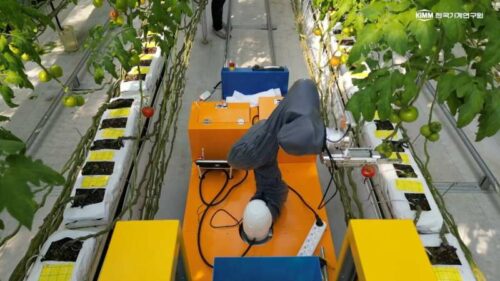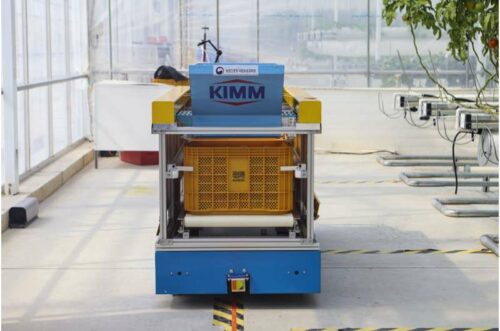Researchers have developed a new multiple robot system consisting of harvesting and transfer robots to perform labor-intensive agriculture tasks.

Robotics has scope in almost every market sector may it be manufacturing or agriculture. Robots can be used to plant crops and irrigate them while simultaneously monitoring their growth. They can also be used in harvesting, especially in cases such as picking fruits and vegetables. Drones equipped with cameras and sensors can be used to monitor crops for signs of disease, pests and nutrient deficiencies, helping farmers diagnose potential problems early.
Researchers at the AI Robot Research Division’s Department of Robotics and Mechatronics of the have developed a multiple-robot system for harvesting crops. KIMM’s new robot system for harvesting horticultural crops consists of harvesting robots and transfer robots. By fully automating the harvesting and transporting processes of the entire farming facility, this technology demonstrates the possibility of unmanning not only harvesting, but also various other labor-intensive tasks at agricultural sites.

The harvesting robots recognize crop information rapidly and precisely in facility farm settings by applying KIMM’s cutting-edge mechanical and AI technologies. The harvesting robots apply AI technology to recognize the location and shape of crops accurately, and the crops are then harvested using robotic hands that are specifically designed for harvesting. The harvesting robots are equipped with a box in which they then temporarily store the harvested crops.
This technology can be used to help at agricultural sites where there is a noticeable shortage of manpower by harvesting crops through an automated system. This system also includes robots that use autonomous driving technology to then transport the harvested crops to loading docks.






